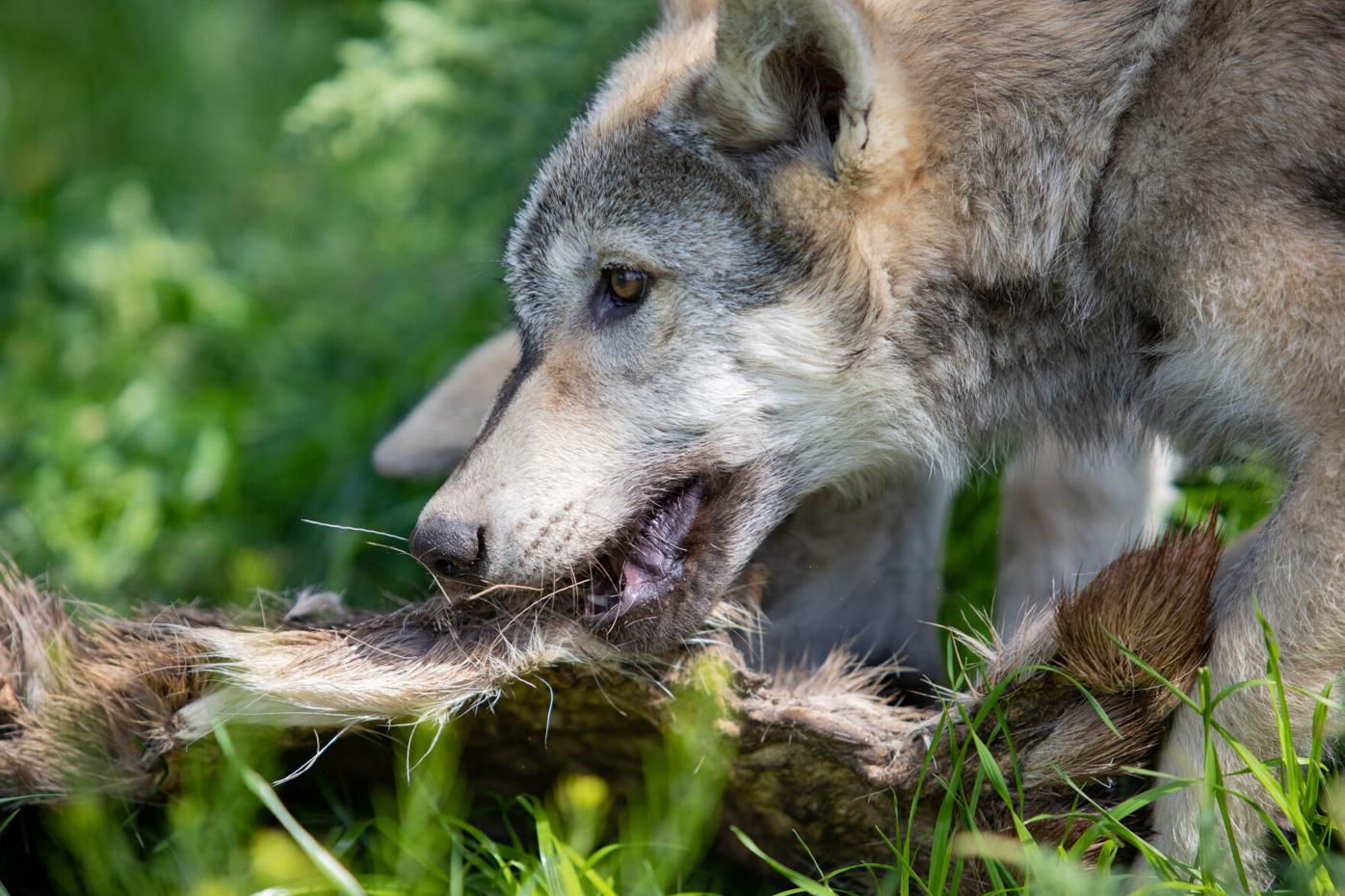State makes request to list Colorado wolf population as “experimental”

Two wolf pups chew on a leathery deer hide and roll in the grass at the Colorado Wolf and Wildlife Center in Divide, Colo., on Wednesday. Back in Nov. 2020, Coloradans voted to reintroduce wolves into the state for the first time in 75 years through Propsition 114. Stakeholders, technical advisors, and Colorado Parks and Wildlife are scheduled to release a management plan for the reintroduction of wolves by Dec. 2022.
John Stember/The Gazette
As the deadline for Colorado Parks and Wildlife (CPW) to develop a wolf reintroduction plan approaches, the state has submitted a request, that if approved, would designate the Colorado wolf population as “experimental” under the Endangered Species Act (ESA). The designation could offer some flexibility to ranchers when it comes to protecting livestock.
“An experimental population is a geographically-described group that is isolated from other existing populations of the species. Individuals in the experimental population are classified as threatened, not endangered, under the ESA,” according to the National Oceanic Atmospheric Association (NOAA).
Happy Trails: A loop trail not to be overlooked at Garden of the Gods
The experimental populations rule is allowed under Section 10(j) of the ESA. In an interview with the Summit Daily regional wolf coordinator Scott Becker reported that the rule would allow state officials to define situations where hazing, injuring, or killing wolves would be allowed in Colorado.
Before making a decision on the request, the U.S. Fish and Wildlife service has to first determine if the Colorado wolf population will be considered essential under the ESA.
“The Services must determine whether the population is “essential” to the survival of the species (i.e., the species will go extinct without the reintroduction of this population) or “non-essential” (i.e., the reintroduced population will contribute to restoring the species, but its recovery can be achieved without the population),” NOAA said.
Concerns over livestock protection were raised over the last year when several wolf predation incidents were recorded in the state. The wolves, which were responsible for killing several cows and a dog, belong to a small pack that migrated to Colorado from a bordering state.
The wolf population in Colorado was eradicated in the 1940s, with a functional population of the species absent from the state for decades. In 2020 a ballot measure was approved, directing the CPW commission to create a plan for the reintroduction and management of gray wolves by December 2023.
Part of that plan must include a protection plan for livestock owners, including the use of state funds to fairly compensate for losses, according to CPW.
New trails in Colorado Springs mountain park get rave reviews
Prolific Colorado Springs runner notches record on state’s highest peak




